I couldn’t wait another 2 days for the truck to deliver the boats, so I borrowed a trailer and drove to the depot in peak traffic to unpack the crate and bring them home. At first sight I could see the effort put into the preparation of the craft and could not wait to get back home and remove the boat from it’s neatly presented packaging. Removing the packaging as carefully as what I imagine it was applied, I knew straight away what kind of quality I could expect. Beautiful white surfaces with neat, sturdy looking fixtures is what caught my eye initially. I gently laid the first boat on the lawn, a second generation Stellar SEL, this was to be my racing boat. The brilliant orange with grey deck inlay would ensure that the high-vis safety regulations would be met at any race.
Starting at the tail, I examined the hull, observing it’s flawless finish. The venturi set-up is the standard scupper & bullet option, in a shiny carbon finish. Further down, toward the nose (bow), is where you really get to the racing end of the boat. The keel line runs into a sharp, deliberate looking, slightly-upswept bow with a modest Stellar logo on each side. Satisfied (to put it mildly) with what I had seen so far, I turned the boat over and put it on the stands. I had a brief look at the cockpit and then got the rudder ready for fitting. I took the 8″ Carbon rudder out of the bubble wrap and removed the hatch cover.
The Stellar set up is the reliable square-top pin into a neatly stamped stainless steel yolk. I unthreaded the lock nut from the rudder shaft and in all my excitement threw that over my shoulder into the grass. Fortunately, I have a stash of stainless steel locknuts in my toolbox, crisis averted… The rudder was on and it was now time to set the footboard. This was where I really started to get blown away. I hadn’t been paddling a self-adjusting setup for a while so initially it looked odd, but when I inspected this one I really was impressed. The camlock and rail system meant I was able to slide the board into the right (very well marked) position with no tools or banging. The 3rd anchor point on the bottom was an added bonus. I could tell straight away that this was a solid system.
First Paddle
There was a fair amount of hype for a reverse Buffels run on the Saturday, the day after I had picked up the boats. I made my way to the beach, got set up and was ready to go. I jumped in and realised immediately that the leg length was a few notches too long. Within a minute however, I had hopped out, adjusted and was back in the boat. The initial hype of a big downwind ended up being pretty mild and the 23 km course was going to be a real test. The first thing I noticed, something which you can’t tell until you’re in the cockpit, is the width of the bow. The seam really is the widest point and the almost tented deck rises neatly to a rounded peak, a feature that I was soon to realise would help shed water really effectively. Next was the stability. I had heard that this boat was stable, particularly for it’s speed. The lack of meat on my nought means that I have to sit on a seat pad, but even with this, the stability was noticeable. On this particular course, the runs start off pretty small and build as you go along. This day the wind direction meant that the first few Km had the runs coming from your back-left. I have a tendency to head deep, sometimes more than necessary, and the stability and superb tracking meant I was able to do this at some pretty extreme angles.
As is the usual story in Fish Hoek at the moment, a random downwind was turning into a full-on dice. Myself and 2016 PE-EL winner Kyle Friedenstein were locked in battle on different lines. He had opted for a simpler, more direct course while I had gone deeper, hoping to make the most of whatever runs were on offer. I ended up finishing just less than a minute behind him, which, to be honest, would have been a good result for me on a boat I was used to, let alone a maiden voyage. 1-0 to Kyle. I was happy. I paddled the boat every day for the next few days, including a great downwind in some pretty awesome conditions. This was where I really started to appreciate the boat’s ability. Tuesday night saw us heading downwind again, this time from Fish Hoek to Miller’s point. 11km of fun. Again, myself and Kyle shadow-boxed, and again I opted for a deeper line initially. Conditions this time were a lot better from the get go and by 9km I was making my way toward shore at some pretty extreme angles and at an average speed of around 3:15/km. I drew level with Kyle and pipped him by 30 seconds. I was able to do this in the last 2-3 km purely because I was able to paddle at 100% without worrying about stability or the boat broaching. 1-all. The next day was mayhem in Cape Town. Schools and businesses closed, roads were quiet and beaches were empty. All this was in anticipation of a monster storm including 40-50 knots of North-Westerly winds. Perfect for a downwind. Myself and Dawid had opted to head out early, before the wind direction was forecasted to swing and conditions became risky. Waiting on the beach for Dawid, a proper squall pulled in and the bay was a complete white-out. I did, for a second, doubt our decision to go. It ended up being a tame, manageable first half and an absolute ride of a second half.
https://www.facebook.com/ian.black.5895/videos/10154492626082019/
Here is a quick video of the paddle: https://youtu.be/EAh83l9CFDc
I am preparing for the Canadian Surfski Champs and Gorge Downwind Champs in July, with the Durban Downwind being a tester event (I haven’t had any serious races since December). I am fairly superstitious when it comes to changing craft and equipment, even kit, too close to an event. Having had just 3 weeks to get accustomed to the SEL however, I couldn’t have been happier. I would also effectively use 4 different boats over a 6 week period, but considering the adjustability and precision of the SEL, I don’t think this will be a problem.
Highlights- Stellar Kayaks SEL 2G
Fittings and construction
Composite bow and stern handles Initially not something I would ever consider a highlight on a racing boat. I would previously have considered them dorky and a feature which would belong exclusively on a touring or recreational craft, they are in fact very practical. They also seem to be a feature in the racing craft if of other manufacturers too. The Stellar versions are both good looking and feel super strong. Particularly handy when tying your boat on after a 30 knot downwind!
Footboard and pedal system
A robust yet beautifully presented composite setup which is as easy to work with as it is to look at. The cam locks on the horizontally oriented rails mean no tools are needed and there is enough room between the pedals and the inner sidewall of the cockpit to allow fat or fumbly fingers to make adjustments on the fly. A 3rd rail and contact on the heel surface means no squeaking, rubbing or loss of energy in the leg drive.
Rudder and Steering system
The self-adjusting footboard and pedal system is complimented with a sturdy rudder controlled by dyneema lines. Rubber sleeves in the holes in the yolk prevent any chaffing on the dyneema, another thoughtful addition from Stellar. I had to change rudders on boats before sending my race boat to Durban and grabbed one from the SR (completely different dimensions to the SEL) hoping to find that it had a similar length shaft. As it turns out, the rudders from all of the surfski’s fit all the boats. This, I think, is awesome. It means that getting replacements or swapping out between different boats or rudder styles is hassle free.
Interchangeable footstraps
Another new feature for me. I have a damaged peroneal nerve in my left leg which results in limited dorsiflexion of my left foot. With a single footstrap this means I need the strap to be loose to allow me to get my feet in easily. The downside to this is no support for the “pulling” foot in my leg drive. The SEL offers both the single and dual footstraps, the change takes only minutes and both are wide, adjustable and comfortable. To me, the duel straps have effectively given me back the ability to pull with my feet.
Venturi, leash anchor and bottle holder.
This is another feature which is new to me but not to others. The venturis are very effective and feature soft rubber bungs attached to light bungy cord. To the racer, being able to plug the venturis means an empty cockpit for water starts which is a lot lighter, it’s also a lot warmer when paddling on colder water. The bungs themselves are pretty easy to pull out, other with your hand and a missed stroke or a quick push with your heel. The leash anchor is well placed and means no flapping leash from footstraps to calf strap. There is also a neat cut-out for a standard 800ml sports bottle in the drop of the hump.
Cockpit
The cockpit itself I have rather unique body geometry. I have wide hips, no butt, the legs of a man who is 6’6″ and the torso of a man who is 5’6″. What this means is that I need a wide cockpit, high seat and low footboard to feel comfortable. The SEL is probably the closest I have felt to being 100% comfortable in a Surfski. The low “hump” and wide seat allow for good rotation and leg drive, I have a little extra room to play with so may try out some hip pads at some stage but for now I’ll keep it as is.
Summary
Somebody asked me just this morning how I was finding the new boat. I found it pretty easy to answer. The SEL is a simple boat. It is stable, predictable and highly responsive – just what I would look for when paddling in the complex, ever-changing environment that is the ocean. Stability can initially be confused with a lack of speed, however, I am confident in saying that this boat is not slow. I managed an 11.37 km downwind in just 38:10 last week, that’s an average speed of 17.5km/h or 3:25 min/km.
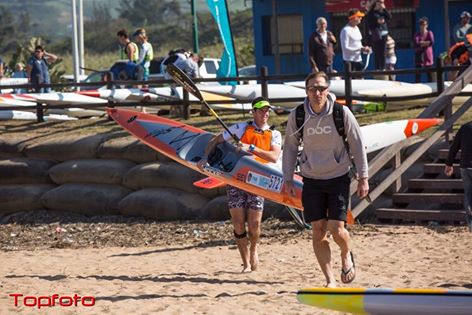
Ian Black with his new SEL 2G
Ian Black completed his first 56 Kilometre Cape Point Challenge at the age of 17 in 2001 with his brother (then 15) in a double surfski. From there on he was hooked on distance racing and after finishing school completed his first 220km Berg River Canoe Marathon. Most comfortable in a surfski, Ian progressed over the years to finish 2nd in the 2007 Cape Town Surfski Series. Paddling took a back seat over the following few years (Ian still completed a further 5 Cape Point Challenges) until July 2015 when he joined Mocke Ocean Gear as Sales and Marketing Manager. After a stark realization in March 2016, Ian decided that all was not lost and that he still had a few years to make the most of his passion for racing surfski. Training in Fish Hoek with the likes of Dawid & Jasper Mocke, Sean & Kenny Rice, Simon Van Gysen and Paul Marais to name a few, Ian had a good 2016 season with top 10’s in two World Surfski Series races- his maiden Hong Kong Dragon Run and the 54km Cape Point Challenge
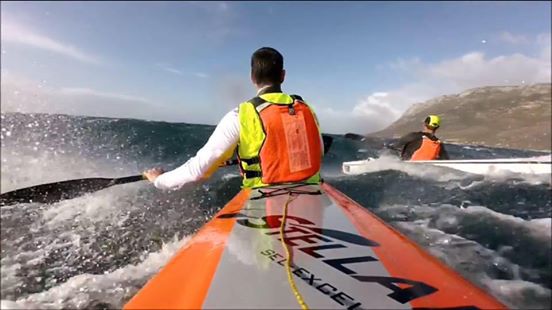
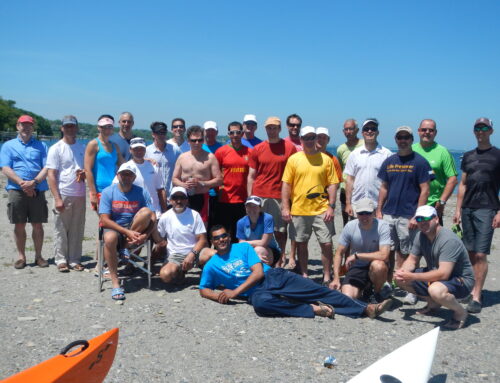
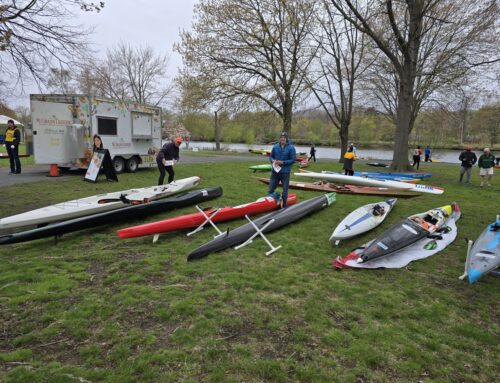
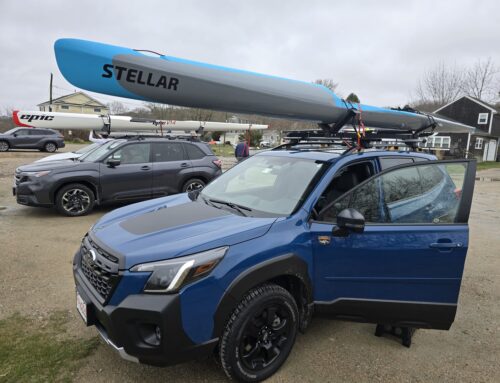
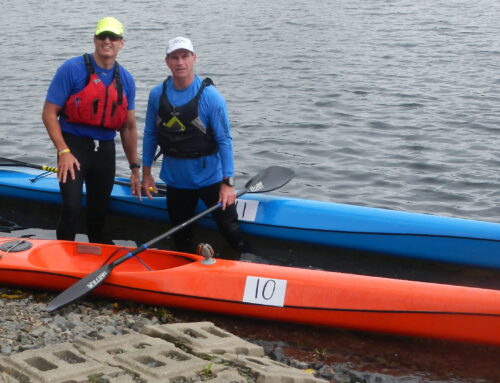
Leave A Comment
You must be logged in to post a comment.